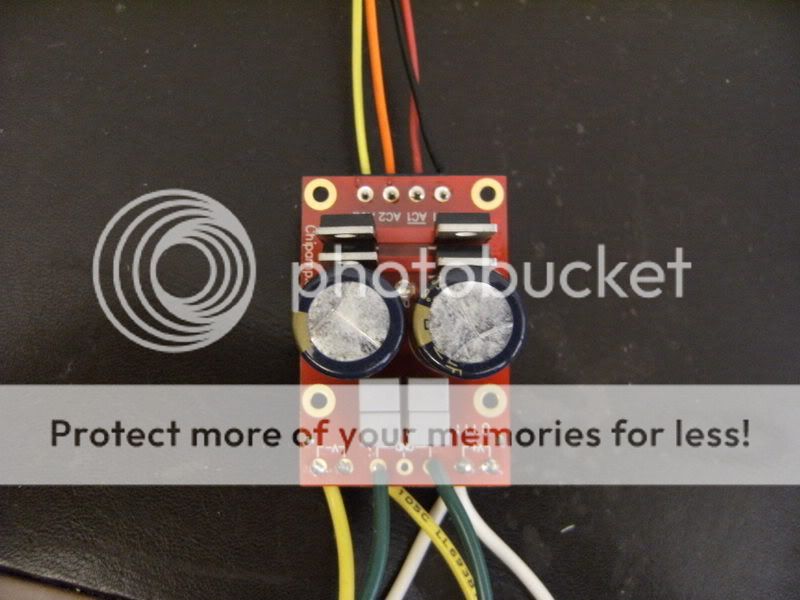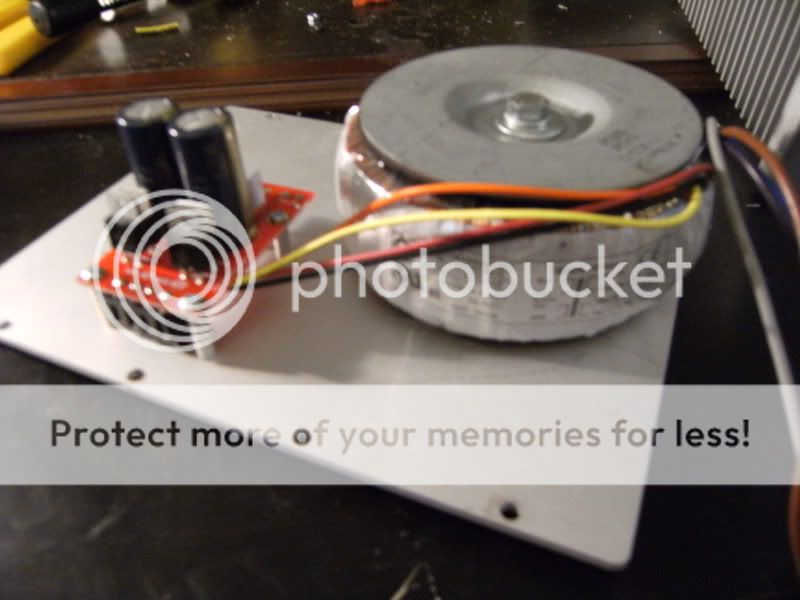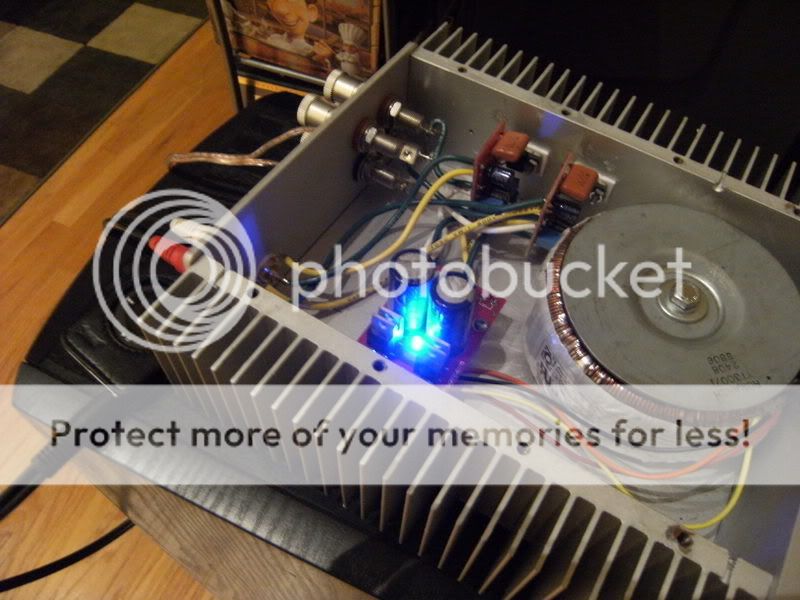Hi Daniel:
Sorry, confusion, only have bridge rectifiers.
I have looking around, and found aprox 10 pc. of KBPC 25A, like you said before is huge, I remember, I bought them to woofers and sub-woofers PS's.
Smaller options I have:
KBU10M (bridge)1000V/10A from DC Components Co.
http://www.datasheetcatalog.com/datasheets_pdf/K/B/U/1/KBU10M.shtml
and finally KBL10 (bridge) from Fairchild 1000V/4A
http://www.datasheetcatalog.net/es/datasheets_pdf/K/B/L/1/KBL10.shtml
Sometimes I misunderstand people due to my bad language.
Sorry again, guys.
Cheers
Iván
Sorry, confusion, only have bridge rectifiers.
I have looking around, and found aprox 10 pc. of KBPC 25A, like you said before is huge, I remember, I bought them to woofers and sub-woofers PS's.
Smaller options I have:
KBU10M (bridge)1000V/10A from DC Components Co.
http://www.datasheetcatalog.com/datasheets_pdf/K/B/U/1/KBU10M.shtml
and finally KBL10 (bridge) from Fairchild 1000V/4A
http://www.datasheetcatalog.net/es/datasheets_pdf/K/B/L/1/KBL10.shtml
Sometimes I misunderstand people due to my bad language.
Sorry again, guys.
Cheers
Iván
codswallopdanielwritesbac said:
Hi Ivan!
My studies of power supplies do suggest that the 1 piece bridge rectifier unit may be especially helpful to amplifiers running from center tap transformers. I suppose that's because the diodes within are perfectly matched?
In the study, fidelity wasn't measured because there are work-arounds in power supply design, but the measure was heat at the heatsink.
In testing several seperate diodes verses several random 1 piece bridge rectifier units, with transformers pushed over their amperage limits, all of the 1 piece did well, while only one of the diodes did well--the Motorola Litespeed series MR.
The remaining seperate diodes did poorly, and the very worst was On-Semi's MUR860, followed closely by their MR and FR series. That indicates some variance by brand as well as the usual advertisments <> applications.
So, it seems that the 1 piece bridge rectifier unit is a good partner for LM1875. Does anyone have some news on specific models that they currently use?
That would be greatly appreciated.

P.S. So far, we have documented KPBC2504, which is huge, so it would be great to have news of some smaller options.
AndrewT said:
codswallop
Not this time.
Note the quote from Mr. Nelson Pass in this document. . .
http://www.tnt-audio.com/clinica/ssps2_e.html
And, this fun document where you get to decide for yourself how that power supply could possibly be hifi.
Here's a tip, look for the little square thing and try to ignore the ovenware.
http://diyaudioprojects.com/Chip/Synergy-LM3875-Gainclone/index.htm
That thing scares me. I hope those chips are stuck onto their insulators with thermal glue.
There's also Puffin's lm3875 and a recently document LM1875 that pounds down the house with techno. Both are overvolted, yet both run much cooler than expected. Technically, I wouldn't do that except for 16 ohm speaker support, and even then its not a recommended practice. That's not the application with these two amps (8 ohm speakers) and the amps still run cool--What reason is there for these to do well?
Its that same little square bridge rectifier.
Repeating these experiments with popular MUR860 brings fire hazard temps. Put a 1 piece bridge on and the amp cools down. Only a few 4 diode supplies worked as well; however, consistent results are more likely with the 1 piece bridge rectifier.
That is an observation during real-life application.
Here's a quote by Dejan Veselinovic: "Lastly, while it's not often said but is still true, diode matching in bridge rectifiers is not an insignificant sideline, but a very important characteristic - and here, block rectifiers, in which all four diodes are built on the same substrate and are matched by default, carry the day hands down."
An externally hosted image should be here but it was not working when we last tested it.
(That quote above is about the component pictured.)
Each component choice makes a tiny difference, but do it well, every time, and you can get hifi. Now, back to the question: Which 1 piece bridge rectifier units have you actually used and prefer?
Cheers!
Sorry, had no internet this morning...
I love those bridge rectifiers, and use the exact same make...
The can/should be bolted to the heatsink or case to help dispate heat.
Regarding paralleling of the long boards, I guess it is possible if you make some special cables, but a board designed for that purpose would likely be a better option...
For sonic reasons,a parallel setup is not something I am interested in, and will likley sound worse than just useing the higher powered chips... bridged parallel could be interesting though...
I love those bridge rectifiers, and use the exact same make...
The can/should be bolted to the heatsink or case to help dispate heat.
Regarding paralleling of the long boards, I guess it is possible if you make some special cables, but a board designed for that purpose would likely be a better option...
For sonic reasons,a parallel setup is not something I am interested in, and will likley sound worse than just useing the higher powered chips... bridged parallel could be interesting though...
Nordic said:. . . a parallel setup is not something I am interested in, and will likely sound worse than just using the higher powered chips... . . .
So, I wonder if there's a design with something like "less bridge" yet "more parallel" if you can guess what I mean? Bridge, while possibly sounding lovely, doesn't increase the power for LM1875.
Any suggestions?
Nordic said:An externally hosted image should be here but it was not working when we last tested it.
I measuered the fuses, they are not worth wile takeing out I think, you gain a handful of mm at best.
I tried a few layout, each have their own issues, like mounting holes etc...
This one seems to be the best, good routing, can accommodate a number of diffirent caps by drilling hole in inline trace... and on input cap you can choose between two points for connecting one of the leads, by cutting through the other trace with a blade.
I need schematic for this layout....anyone can help
read the PCB, it's a very simple layout to follow.dytln_02 said:
I need schematic for this layout....anyone can help
AndrewT said:required VA~=1times total output power to 3times total output power.
But no less than 80VA.
eg. output = 20W+20W then VA can be between 40 and 120. But lower limit is 80VA, so use 80VA or 100VA or 120VA.
Why is there a lower limit of 80VA?
I see two reasons. There may be others.
1.) The transformer regulation is too high for small transformers.
2.) The very small transformers don't sound as good.
I suspect these two reasons are interlinked and come from massive variations in the PSU voltage as the current sent to the load varies.
1.) The transformer regulation is too high for small transformers.
2.) The very small transformers don't sound as good.
I suspect these two reasons are interlinked and come from massive variations in the PSU voltage as the current sent to the load varies.
Thanks man!
I was recently involved in (got roped into) making an extremely small amplifier with a 28VA transformer. This deal sounded rather good, but didn't have much bass.
Comparing a very similar design using a 160VA transformer, well that amp on the big transfo doesn't lack for bass.
Personally, I never found a substitute for a big linear supply; but, Surely there's some more elegant options than using a great big transformer every time?
I was recently involved in (got roped into) making an extremely small amplifier with a 28VA transformer. This deal sounded rather good, but didn't have much bass.
Comparing a very similar design using a 160VA transformer, well that amp on the big transfo doesn't lack for bass.
Personally, I never found a substitute for a big linear supply; but, Surely there's some more elegant options than using a great big transformer every time?
Yes, they are.danielwritesbac said:Check out the PDF files at national semiconductor. The lm1875.pdf and lm1876.pdf are quite informative.
No, it is not 2 x LM1875 internally. The specs and equivalent schematics in the above mentioned datasheets are quite different.danielwritesbac said:The spreadsheet works from the variables in lm1876.pdf. It is 2x, LM1875's internally
pacificblue said:. . . No, it is not 2 x LM1875 internally. The specs and equivalent schematics in the above mentioned datasheets are quite different.
Thanks for correcting this.
Nordic said:
Can the input components be modified so only low freq Hz will pass ie 150Hz and below? You know, to drive a little subwoofer!
Furthermore, can this preamp be used to drive three of these LM1875 PCBs?
Left/right full tone PCBs and a third LM1875 PCB to provide the low? Kinda like a sub-satelite computer speaker set with more balls?
Also, I'm more interested in DIY at home my own PCBs so if you know of a preamp with basic tone control and volume that I can fabricate with free pcb layouts etc I would be very happy.
DIY to me means I should be able to make my own PCBs and NOT have to purchase them, though I don't think purchasing PCBs is a bad thing for most if not all people.
Left/right full tone PCBs and a third LM1875 PCB to provide the low? Kinda like a sub-satelite computer speaker set with more balls?
Also, I'm more interested in DIY at home my own PCBs so if you know of a preamp with basic tone control and volume that I can fabricate with free pcb layouts etc I would be very happy.
DIY to me means I should be able to make my own PCBs and NOT have to purchase them, though I don't think purchasing PCBs is a bad thing for most if not all people.
- Status
- This old topic is closed. If you want to reopen this topic, contact a moderator using the "Report Post" button.
- Home
- Amplifiers
- Chip Amps
- LM1875 PCB, Which To Use





